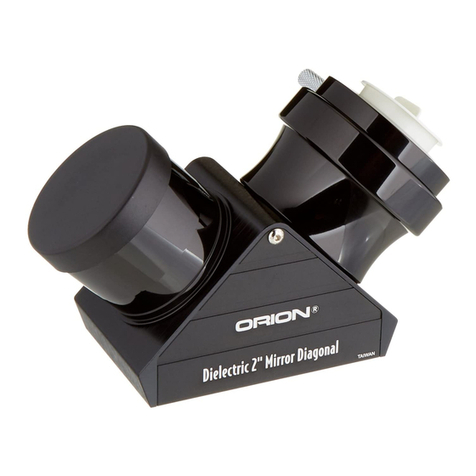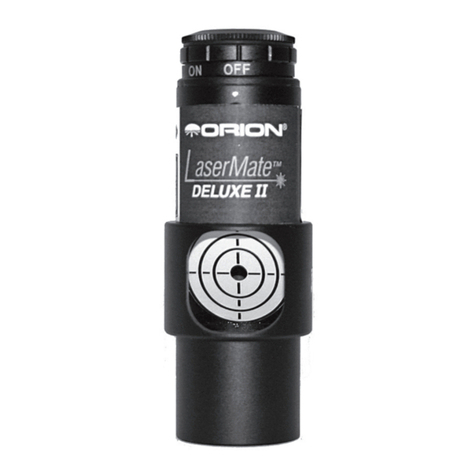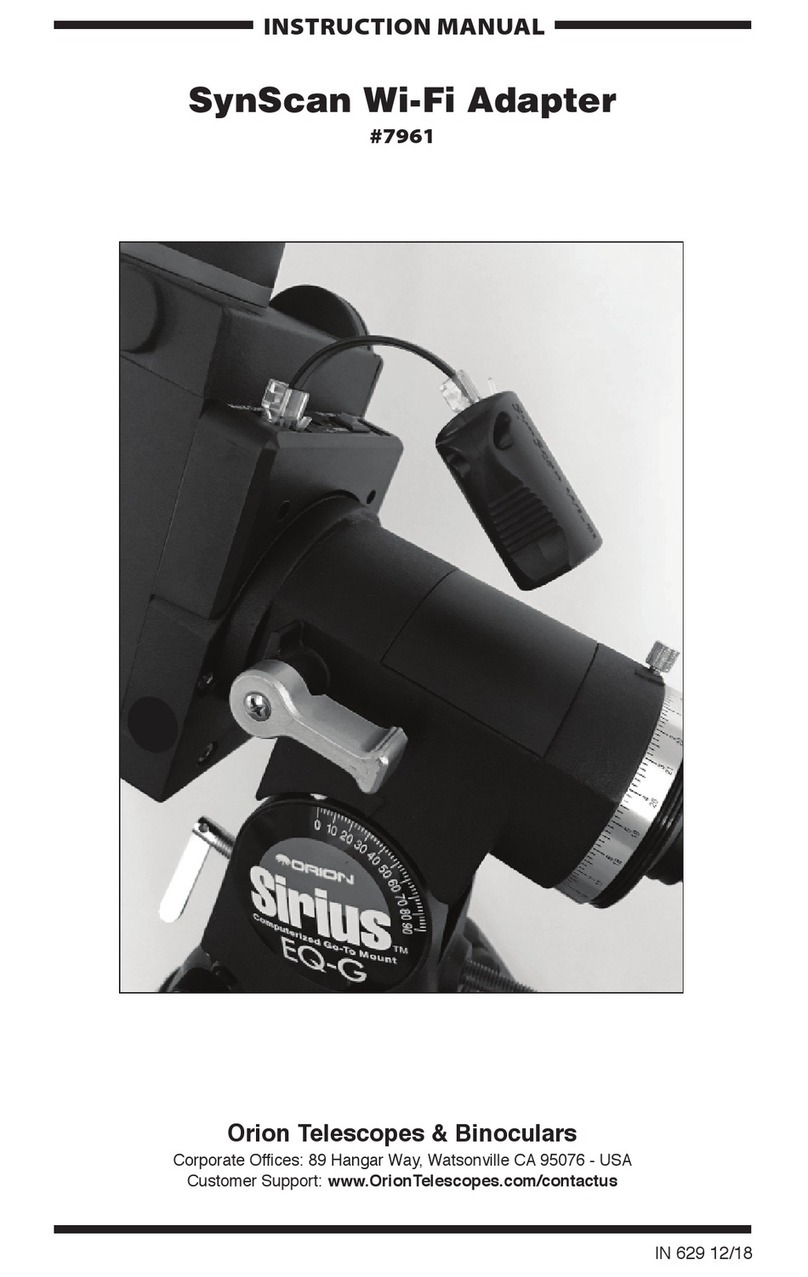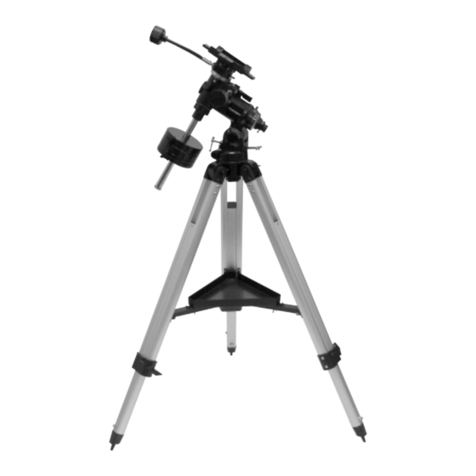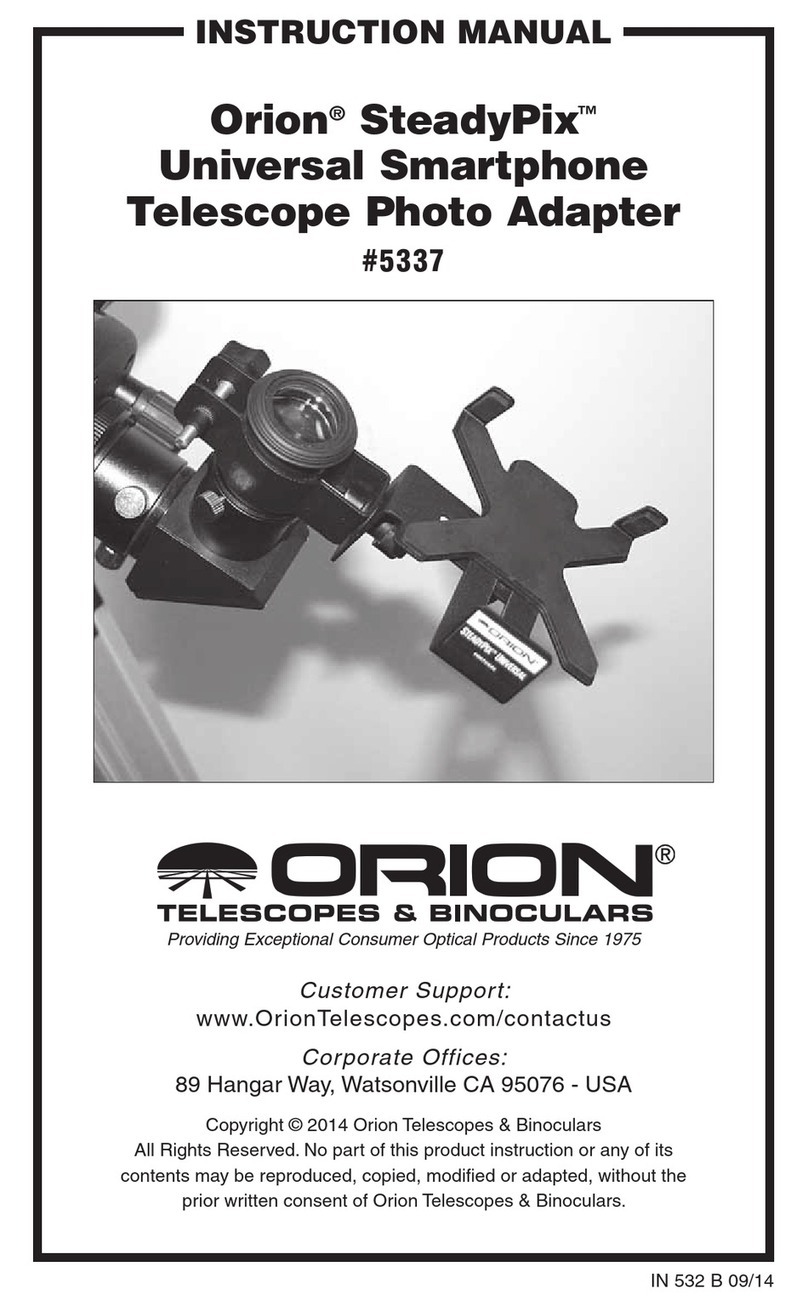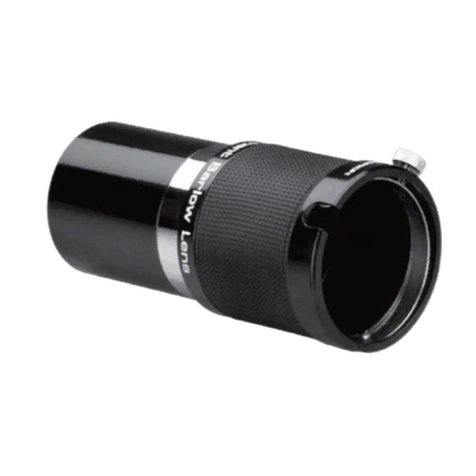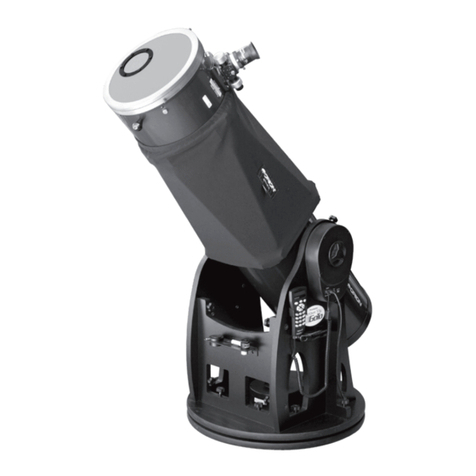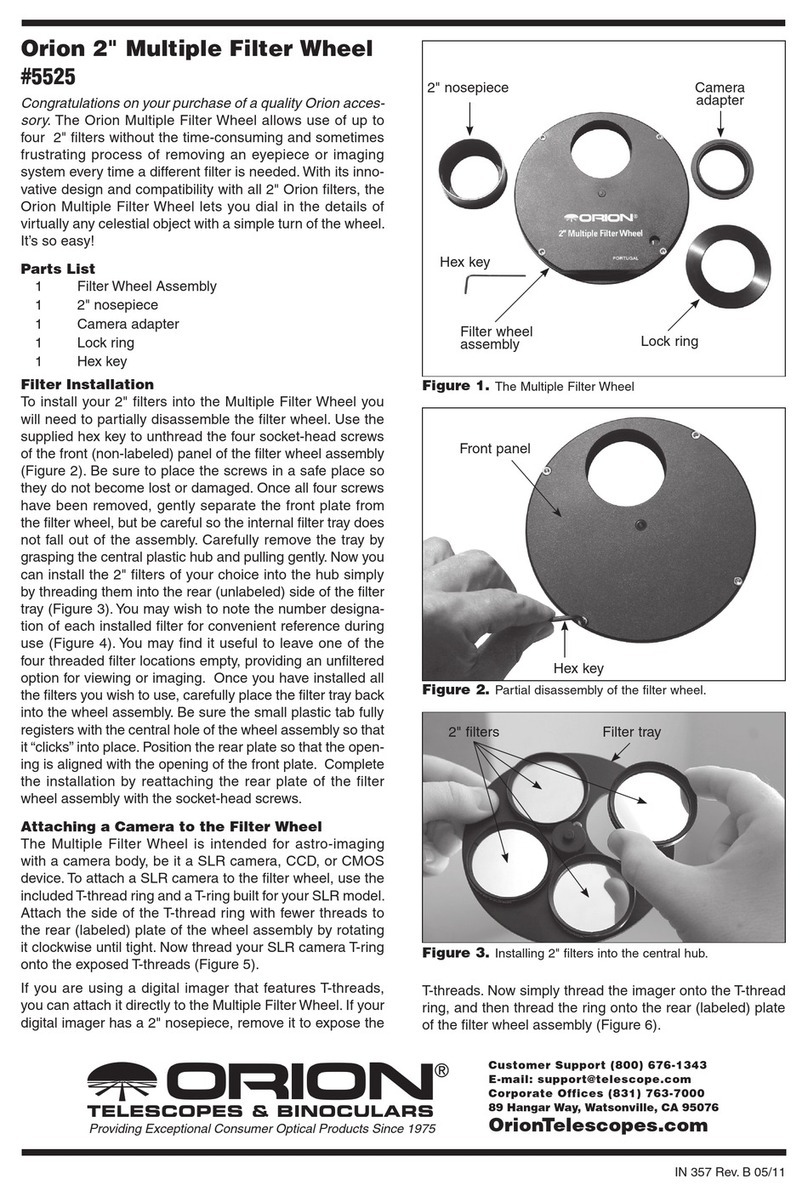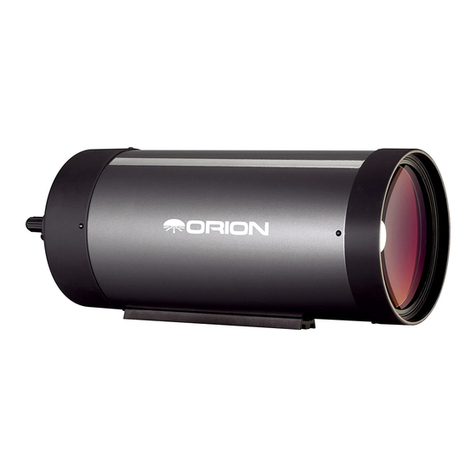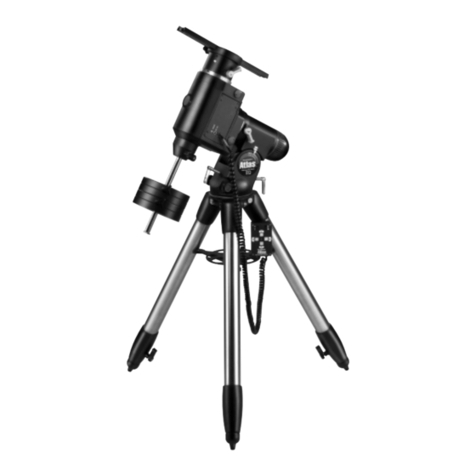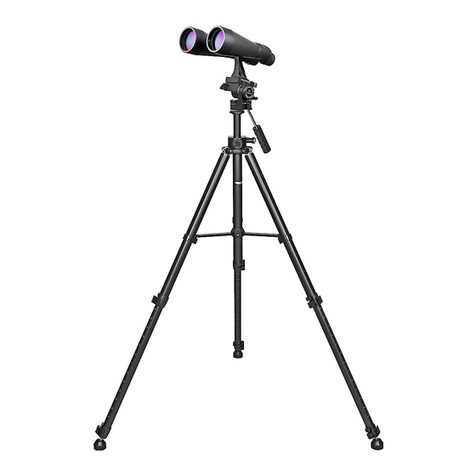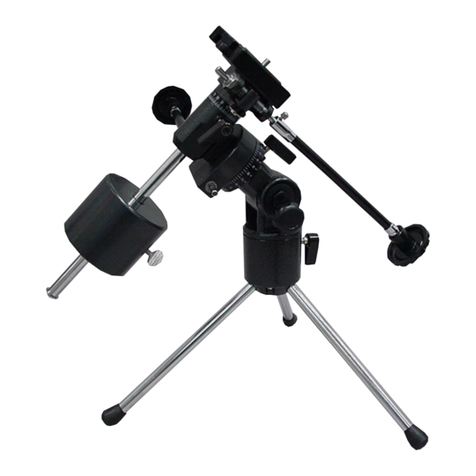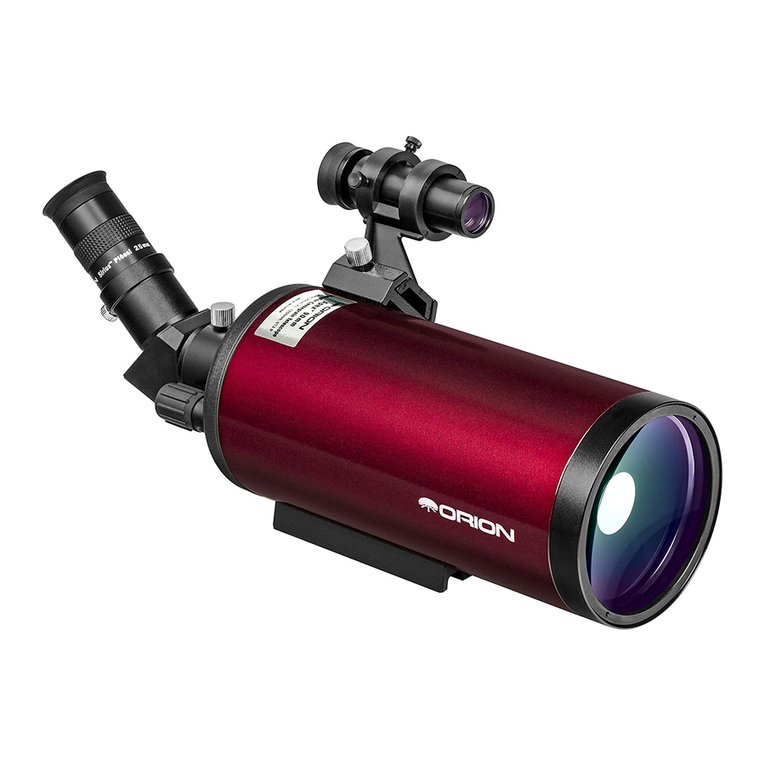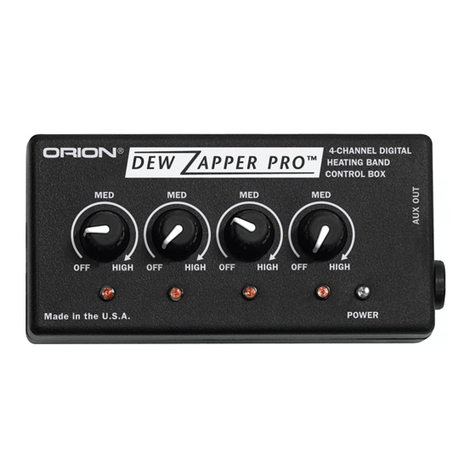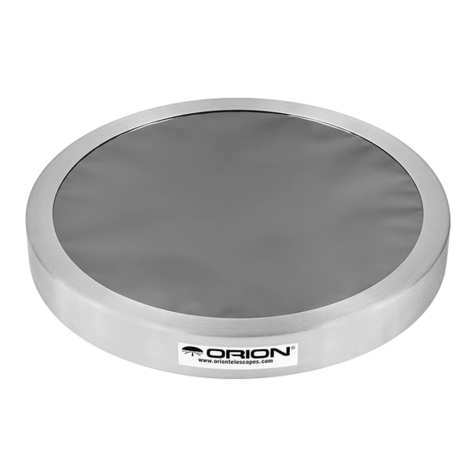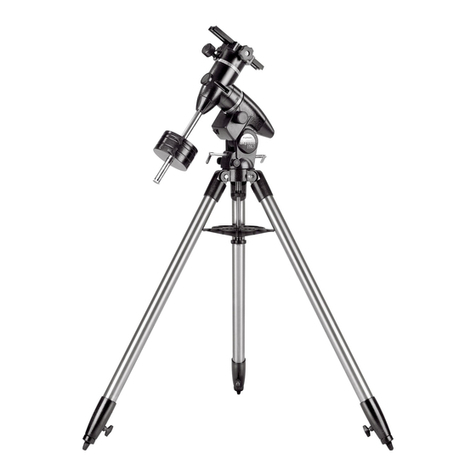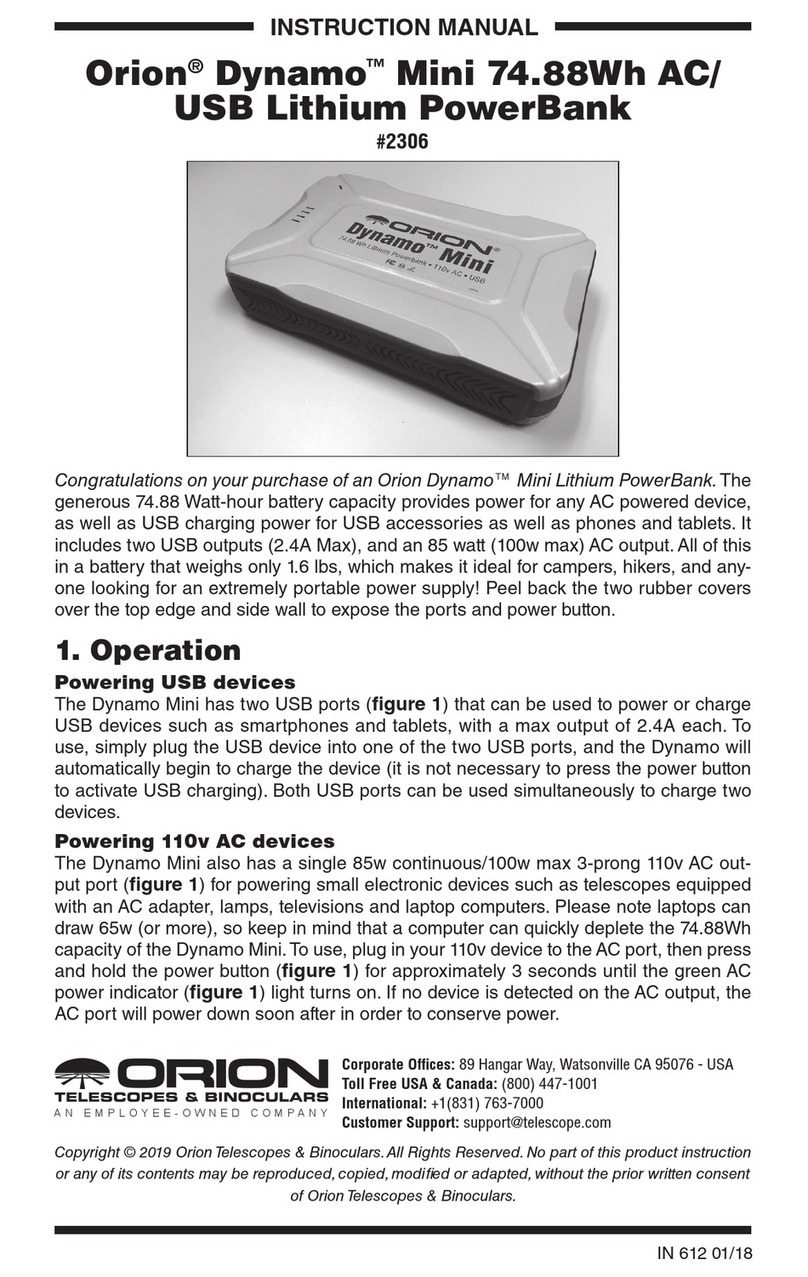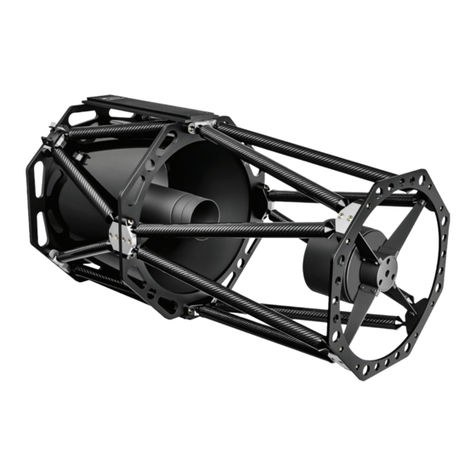
Collimation is the alignment of a telescope’s optics with its
mechanical axis. Your Maksutov-Casegrain’s optics were colli-
mated at the factory and should generally not need adjustment
unless the telescope has been handled roughly. This manual
describes how to test the collimation of your telescope and pro-
vides step by step instructions for proper alignment should that
be needed.
I. Star-Testing the Telescope
Before you start adjusting the primary mirror of your telescope,
make certain that it is actually out of collimation by performing
a star test.
Take your telescope out at dusk and let it acclimate to the out-
side temperature; this usually takes 30-60 minutes. When it is
dark, point the telescope upwards at a bright star and accurately
center it in the eyepiece’s eld of view. Slowly de-focus the image
with the focusing knob. If the telescope is correctly collimated,
the expanding disk should be a circle (Figure 1). If the image
is unsymmetrical, the scope is out of collimation. Also, the dark
shadow cast by the secondary mirror should appear in the very
center of the out-of-focus circle, like the hole in a donut. If the
“hole” appears off-center, the telescope is out of collimation.
If you try the star test but the bright star you have selected is
not accurately centered in the eyepiece, the optics will always
appear out of collimation, even though they may be perfectly
aligned. It is critical to keep the star centered during the star test!
II. The Collimation Screws
On Orion Maksutov-Cassegrain telescopes only the primary mir-
ror’s tilt can be adjusted. The secondary mirror is xed in place
on the inside of the meniscus lens and cannot be adjusted.
To adjust the tilt of the primary mirror, you will use six collima-
tion screws on the rear cell of the telescope. On the smaller
Maks, the six screws are evenly spaced: three large screws that
alternate with three smaller screws (Figure 2a). On the larger,
150mm and 180mm Maks, the six screws are arranged in three
close pairs, with each pair consisting of one large and one small
screw (Figure 2b). The large and small collimation screws
work together to adjust the tilt of the primary mirror in a “push-
pull” fashion. One must be loosened and the other tightened by
equal amounts in order to adjust the mirror’s tilt.
The collimation screws are Allen head screws; you will need
metric Allen wrenches to turn these screws (sizes needed are
stated in the procedures below). Metric Allen wrench sets are
available at many hardware stores or on the internet.
III. The Collimation Procedure
The procedure for collimating an Orion Maksutov-Cassegrain
will be slightly different depending on whether it has the colli-
mation screws in three close pairs (for the 150mm and 180mm
Maks) or it has them evenly spaced (for the 90mm, 102mm,
and 127mm Maks). We will rst describe the procedure for the
smaller Maks, then in Section B we will cover the procedure for
the larger Maks.
A. Collimating the Orion 90mm, 102mm, and
127mm Maksutov-Cassegrains
Follow this procedure for Maksutov-Cassegrains having six
equidistant (evenly spaced) collimation screws on the rear cell,
as in Figure 2a.You will need a 3mm and a 2mm Allen wrench
to turn the collimation screws.
This procedure should be done indoors, with the telescope
pointed at a white wall in a well-lit room. Remove the diagonal
and eyepiece and look into rear opening of the optical tube (also
remove the dust cover from the front of the tube). Try to keep
your eye centered with respect to the rear opening of the tube
as best as possible. Using an Orion Collimating Eyepiece or a
Cheshire eyepiece will aid greatly in keeping your eye centered
and is strongly recommended.
If your telescope is out of collimation, the view will resemble
Figure 3a. A properly collimated scope will resemble Figure
3b. The direction of the misalignment in your telescope may dif-
fer from Figure 3a, but the diagram gives you the general idea
of how things will look.
Locate the black crescent near the outer edge of the eld of
view. The appearance of such a black crescent indicates that
the telescope is out of alignment. Note which way the front of
the telescope would need to move in order to “ll” that black
crescent and resemble Figure 3b. Then look at the back end
of the telescope and locate the collimation screw that is in the
Figure 2. a) Orion 90mm, 102mm, and 127mm Maks have six
evenly spaced collimation screws on the rear cell, whereas
b) Orion 150mm and 180mm Maks have three close pairs of
collimation screws.
a b
Figure 1. A star test will determine if a telescope’s optics are
properly collimated. An unfocused view of a bright star through the
eyepiece should appear as illustrated on right if optics are perfectly
collimated. If circle is unsymmetrical, as in illustration on left,
scope needs collimation.
Out of collimation Collimated
2
